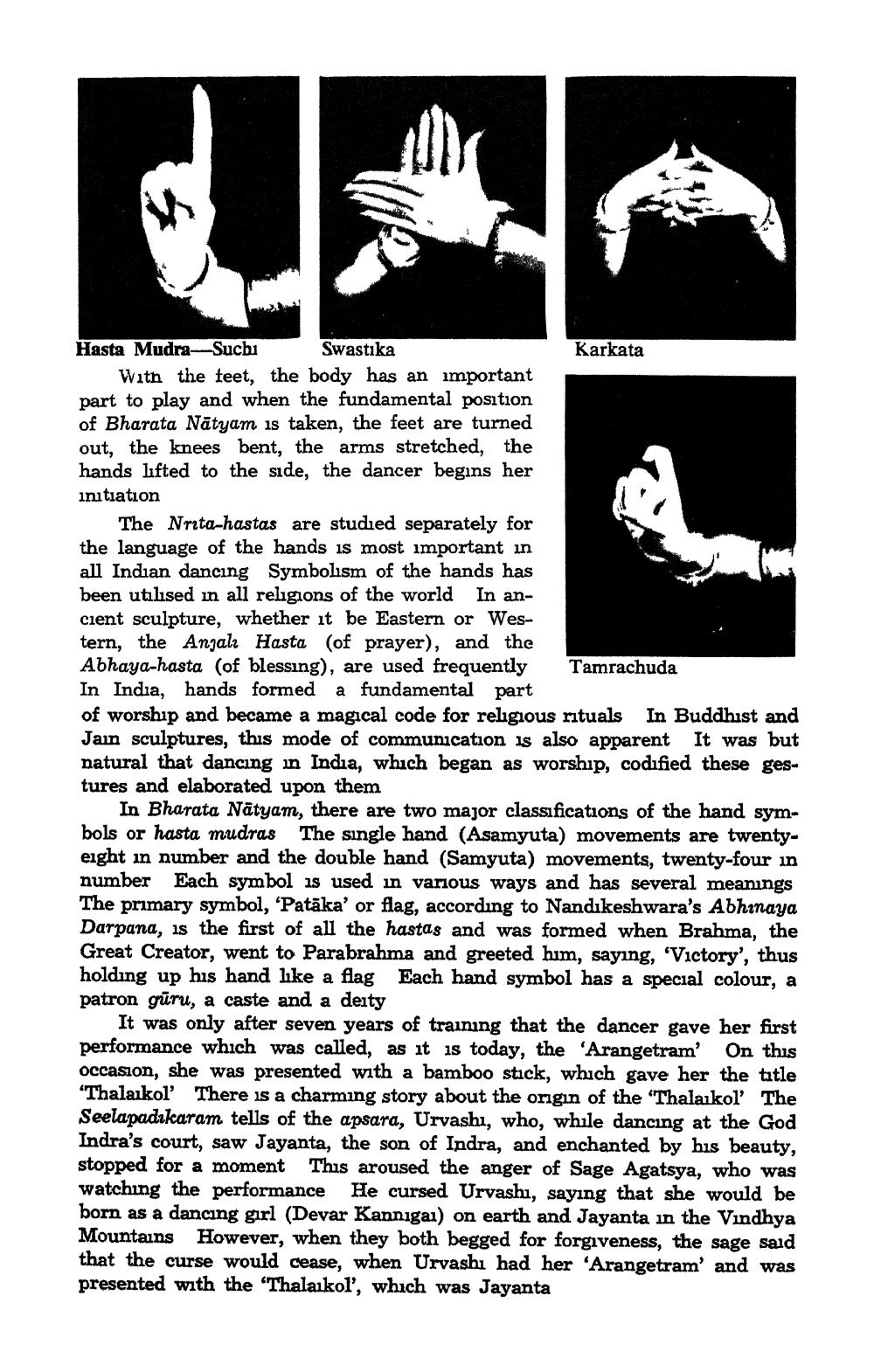________________
Hasta Mudra-Suchi Swastika
Karkata With the teet, the body has an important part to play and when the fundamental position of Bharata Nātyam is taken, the feet are turned out, the knees bent, the arms stretched, the hands lifted to the side, the dancer begins her initiation
The Nrita-hastas are studied separately for the language of the hands is most important in all Indian dancing Symbolism of the hands has been utilised in all religions of the world in ancient sculpture, whether it be Eastern or Western, the Angalı Hasta (of prayer), and the Abhaya-hasta (of blessing), are used frequently Tamrachuda In India, hands formed a fundamental part of worship and became a magical code for religious rituals In Buddhist and Jain sculptures, this mode of communication is also apparent It was but natural that dancing in India, which began as worship, codified these gestures and elaborated upon them
In Bharata Nātyam, there are two major classifications of the hand symbols or hasta mudras The single hand (Asamyuta) movements are twentyeight in number and the double hand (Samyuta) movements, twenty-four in number Each symbol is used in various ways and has several meanings The primary symbol, 'Patāka' or flag, according to Nandıkeshwara's Abhinaya Darpana, is the first of all the hastas and was formed when Brahma, the Great Creator, went to Parabrahma and greeted him, saying, 'Victory', thus holding up his hand like a flag Each hand symbol has a special colour, a patron gūru, a caste and a deity
It was only after seven years of training that the dancer gave her first performance which was called, as it is today, the 'Arangetram' On this occasion, she was presented with a bamboo stick, which gave her the title "Thalaikol' There is a charming story about the origin of the 'Thalaikol' The Seelapadıkaram tells of the apsara, Urvashi, who, while dancing at the God Indra's court, saw Jayanta, the son of Indra, and enchanted by his beauty, stopped for a moment This aroused the anger of Sage Agatsya, who was watching the performance He cursed Urvashi, saying that she would be born as a dancing girl (Devar Kannigai) on earth and Jayanta in the Vindhya Mountains However, when they both begged for forgiveness, the sage said that the curse would cease, when Urvashi had her 'Arangetram' and was presented with the "Thalaikol', which was Jayanta




